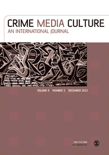
Crime Media Culture
Scope & Guideline
Illuminating the Intersection of Crime, Culture, and Communication
Introduction
Aims and Scopes
- Cultural Criminology:
The journal emphasizes cultural criminology, which examines the cultural contexts of crime, exploring how crime is represented in various media forms and how these representations influence public perception and policy. - Media Representation of Crime:
A core area of focus is the analysis of media representations of crime, including news coverage, films, and social media, and their impact on societal attitudes towards crime and justice. - Intersectionality and Social Justice:
The journal explores themes of intersectionality, particularly how race, gender, and class intersect in the context of crime and justice, advocating for social justice through critical analysis. - Technological Impact on Crime and Policing:
There is a consistent focus on the implications of technology in crime and policing, including the role of digital media, surveillance, and datafication in shaping contemporary understandings of crime. - Narrative and Storytelling:
The journal places importance on narrative approaches to understanding crime, including storytelling in various media forms and its effects on public discourse and policy.
Trending and Emerging
- Digital and Online Crime:
An increasing number of articles are exploring the implications of digital technology and social media on crime, including issues of cybercrime, online harassment, and the role of digital platforms in shaping criminal narratives. - Cultural Responses to Extremism:
There is a growing focus on cultural responses to extremism, particularly in relation to far-right movements and their representation in media, reflecting societal concerns about radicalization and public safety. - Pandemic Policing and Social Control:
Recent themes have emerged around the effects of the COVID-19 pandemic on policing practices and social control mechanisms, examining how public health measures intersect with criminal justice. - Environmental Criminology:
The journal is increasingly addressing environmental criminology, exploring how ecological and environmental issues intersect with crime, particularly in relation to climate change and justice. - Visual and Sensory Methods in Criminology:
There is a trend towards employing visual and sensory methodologies in criminological research, reflecting a broader interest in how visual culture and sensory experiences shape understandings of crime and justice.
Declining or Waning
- Traditional Law Enforcement Practices:
There has been a noticeable reduction in papers focusing solely on traditional law enforcement practices without the critical lens of cultural or media analysis, indicating a shift towards more nuanced discussions. - Purely Quantitative Studies:
The journal appears to be moving away from purely quantitative studies of crime statistics and law enforcement effectiveness, favoring qualitative and critical approaches that examine the cultural implications of crime. - Historical Criminology:
While historical perspectives remain relevant, there has been a decrease in publications focusing exclusively on historical criminology, suggesting a shift towards contemporary issues and their cultural implications.
Similar Journals
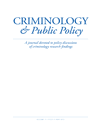
Criminology & Public Policy
Exploring the Nexus of Crime and GovernanceCriminology & Public Policy, published by Wiley, is an esteemed journal that plays a pivotal role in the interdisciplinary fields of law, public administration, and literature. With a focus on innovation and empirical research, this journal addresses critical issues surrounding crime and justice while influencing policy decisions globally. The journal boasts a prestigious impact factor, reflecting its significant contribution to academic discourse, particularly noted for its top quartile rankings in the fields of Law, Literature and Literary Theory, and Public Administration in 2023. As a resource for researchers, practitioners, and policymakers, Criminology & Public Policy aims to bridge the gap between theory and practical application, presenting cutting-edge analyses and insights that are vital for addressing contemporary societal challenges. By providing a platform for rigorous scholarship, this journal supports the advancement of knowledge and fosters informed discussions that shape effective public policies.

Salus Journal
Transforming Health Practices with Accessible KnowledgeSalus Journal, published by Charles Sturt University, is an esteemed open-access journal dedicated to advancing the field of health sciences. Established in 2013, this journal emphasizes the dissemination of innovative research and critical analyses that influence evidence-based practices in healthcare and wellness. With its commitment to making high-quality research accessible to a global audience, Salus Journal plays a crucial role in fostering academic collaboration and dialogue among researchers, professionals, and students alike. Its focus on interdisciplinary approaches encourages contributions across various domains of health, ensuring that it remains a vital resource for the community. The journal is easily accessible online, promoting the visibility and impact of published works. For more information and to stay updated with the latest research in health sciences, visit their website and explore the wealth of knowledge available.

JOURNAL OF QUANTITATIVE CRIMINOLOGY
Enhancing Methodological Rigor in CriminologyJOURNAL OF QUANTITATIVE CRIMINOLOGY, published by Springer/Plenum Publishers, serves as a premier outlet for cutting-edge research in the fields of law and forensic medicine. With an impressive impact factor and ranked in the top quartile (Q1) of both Law and Pathology and Forensic Medicine categories in 2023, this journal excels in providing empirical analyses and quantitative assessments that address critical issues in criminological research. Since its inception in 1985, the journal has maintained a reputation for excellence, evidenced by its high standing in Scopus rankings—21st out of 1025 in Social Sciences (Law) and 23rd out of 208 in Medicine (Pathology and Forensic Medicine). Although currently not an open access publication, it offers several subscription-based access options to reach a wide array of academics and professionals dedicated to the advancement of criminological and forensic inquiries. Researchers, professionals, and students will find the JOURNAL OF QUANTITATIVE CRIMINOLOGY an invaluable resource, as it fosters interdisciplinary collaboration and methodological rigor in understanding crime and criminal behavior.
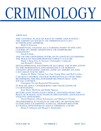
CRIMINOLOGY
Pioneering Research at the Intersection of Law and Medicine.CRIMINOLOGY, published by WILEY, stands as a leading journal in the fields of Law and Forensic Medicine, with an impressive impact factor that places it in the Q1 quartile for both categories. With its ISSN 0011-1384 and E-ISSN 1745-9125, this esteemed journal has been at the forefront of advancing knowledge and understanding in criminological theories and practices since its inception in 1963, and continues to be relevant through 2024. As of 2023, CRIMINOLOGY is ranked #19 in Social Sciences_ Law and #19 in Medicine_ Pathology and Forensic Medicine, positioning it within the top 2% of its field, making it an essential resource for researchers and professionals alike. Despite not offering open access, it provides invaluable insights into the complexities of crime, law enforcement, and societal impacts, thus shaping the future of criminological research and policy.
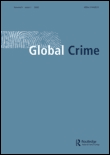
Global Crime
Fostering Dialogue for a Safer Global CommunityGlobal Crime is a leading scholarly journal published by Routledge Journals, Taylor & Francis Ltd, focusing on the multifaceted dimensions of crime and justice on a global scale. With an ISSN of 1744-0572 and E-ISSN of 1744-0580, this journal serves as a critical platform for researchers, practitioners, and policymakers interested in the intersection of legal studies, political science, and sociological perspectives. The journal boasts a prestigious Q1 ranking in Law and notable Q2 rankings in Political Science and International Relations, as well as Sociology, highlighting its influential role in shaping academic discourse. In 2023, it ranked #88 out of 1025 journals in Law, placing it in the 91st percentile, thus ensuring its status as an essential resource for those engaged in advanced research. While it does not currently offer open access options, Global Crime continuously seeks to illuminate the complexities of crime, fostering a better understanding through comprehensive studies, critical analyses, and innovative approaches. By converging insights from various disciplines, the journal aims to facilitate dialogue among academics and practitioners alike, ultimately advancing the field of criminal justice globally.
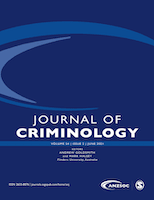
Journal of Criminology
Transforming insights into impactful policy.Journal of Criminology, published by SAGE Publications Ltd, serves as a leading platform for scholarly discourse in the field of criminology, exploring the complexities of crime, justice, and social control. With an ISSN of 2633-8076 and an E-ISSN of 2633-8084, this open-access journal has quickly established itself, achieving a prestigious Q1 ranking in Law as per the 2023 Category Quartiles. Spanning a converged timeframe from 2021 to 2024, the journal primarily focuses on promoting innovative research and critical analyses that inform policy and practice within the legal frameworks and criminological theories. Its impactful contributions are evidenced by its impressive Scopus Rank of #104 out of 1025 in Social Sciences Law, placing it at the 89th percentile among its peers. Positioned in the heart of London at 1 Olivers Yard, 55 City Road, London EC1Y 1SP, England, the Journal of Criminology is dedicated to advancing knowledge and understanding in a rapidly evolving discipline, making it an invaluable resource for researchers, professionals, and students alike.
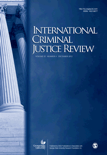
International Criminal Justice Review
Fostering innovative solutions for international crime.International Criminal Justice Review is a premier journal in the field of law, published by SAGE Publications Inc, renowned for its commitment to advancing the understanding of criminal justice issues on a global scale. With an ISSN of 1057-5677, this journal spans a rich history from its inception in 1991 to its ongoing contributions into 2024, supporting a diverse array of research that addresses both theoretical and practical concerns in international criminal law. The journal holds a prestigious Q1 ranking in the Law category for 2023, reflecting its influence and relevance, as evidenced by its impressive Scopus rank of #68 out of 1025 in the Social Sciences Law field, placing it in the 93rd percentile. Though not an open-access journal, it provides vital access options for institutions and individuals alike. International Criminal Justice Review serves as a critical resource for researchers, practitioners, and students dedicated to exploring the complexities of international criminal justice systems, offering a platform for innovative scholarship that informs policy and practice worldwide.

Trends and Issues in Crime and Criminal Justice
Navigating the complexities of crime and law.Trends and Issues in Crime and Criminal Justice is a leading journal in the field of criminology, published by the Australian Institute of Criminology. This esteemed journal, recognized with an H-index that reflects its influence and contribution to the social sciences, particularly law, spans from 2011 to 2024 and is ranked in the Q1 category within its discipline according to the 2023 data. With a Scopus ranking of #123 out of 1025 in the Social Sciences - Law category, placing it in the 88th percentile, it serves as a critical resource for researchers, practitioners, and students alike.
Focused on innovative research and emerging issues within crime and criminal justice, the journal seeks to foster scholarly collaboration and discourse, making it an essential hub for new ideas and evidence-based practices in the field. The journal’s commitment to advancing knowledge and influencing policy ensures that it remains an influential voice in criminological studies, aiming to address pressing issues facing societies globally.

Revija za Kriminalistiko in Kriminologijo
Exploring the Intersection of Crime and JusticeRevija za Kriminalistiko in Kriminologijo is a prominent academic journal dedicated to the fields of criminalistics, criminology, law, and forensic medicine, published by the Ministry of Interior Republic Slovenia. With its inception in 1981, the journal has served as a pivotal platform for disseminating research findings and innovative ideas relevant to crime and justice issues, particularly in the context of Slovenia and the wider region. Despite its current Q4 ranking in various categories, including Law and Pathology & Forensic Medicine, Revija za Kriminalistiko in Kriminologijo remains essential for emerging scholars and professionals seeking to contribute to the discourse in forensic science and social psychology. Although the journal does not offer open access options, it continues to publish rigorous peer-reviewed articles that significantly impact the field, making it a valuable resource for researchers, practitioners, and students alike. Scholars can access the research at the journal's address in Ljubljana, Slovenia, thereby fostering interdisciplinary collaboration and knowledge sharing.

Crime and Justice-A Review of Research
Illuminating pathways to justice and societal understanding.Crime and Justice: A Review of Research is a leading scholarly journal published by the University of Chicago Press, dedicated to advancing knowledge in the fields of sociology and political science, specifically through the lens of crime and justice studies. With an ISSN of 0192-3234 and an E-ISSN of 2153-0416, this academic journal offers a distinguished platform for researchers, practitioners, and students to explore contemporary issues, methodologies, and theoretical advancements within the domain. Ranked in the Q2 category for both sociology and political science as of 2023, it has gained recognition with an impressive Scopus rank of #150 out of 1466 in its field, placing it in the 89th percentile. The journal publishes comprehensive reviews and research articles that inform best practices and policies in crime prevention, law enforcement, and social justice, fostering a deeper understanding of the complexities surrounding crime and societal responses. Though it is not an open-access journal, the insightful research it presents is indispensable for academic discourse and practical application in addressing the multifaceted challenges of crime and justice in contemporary society.